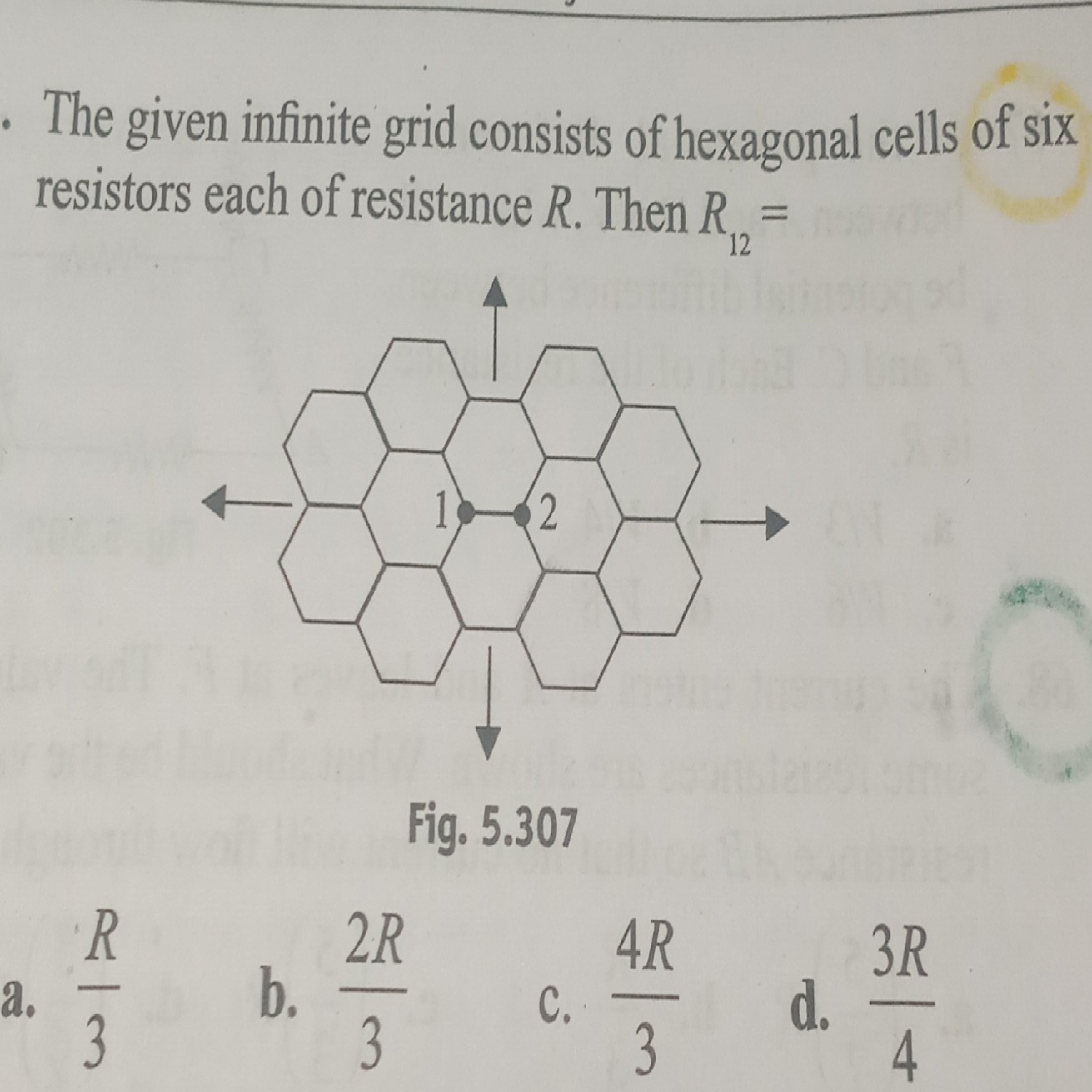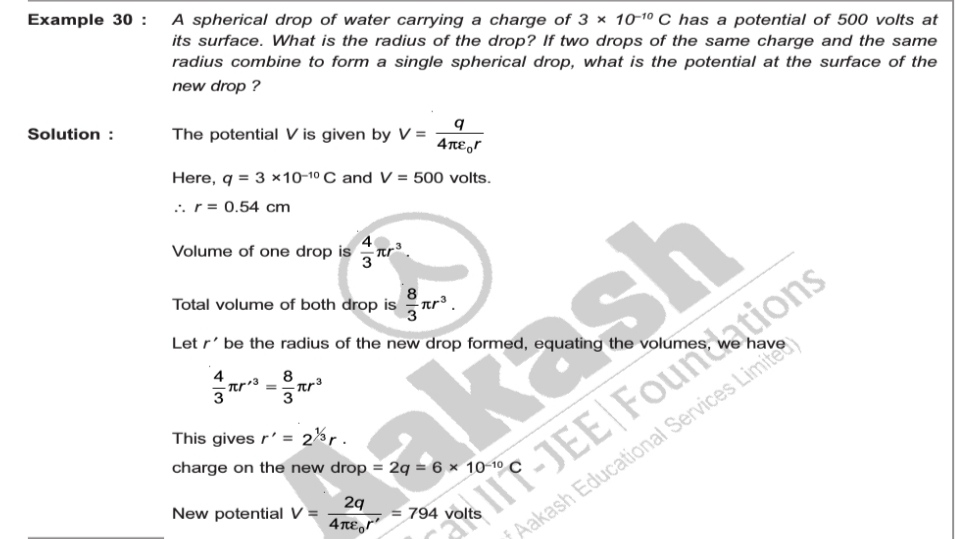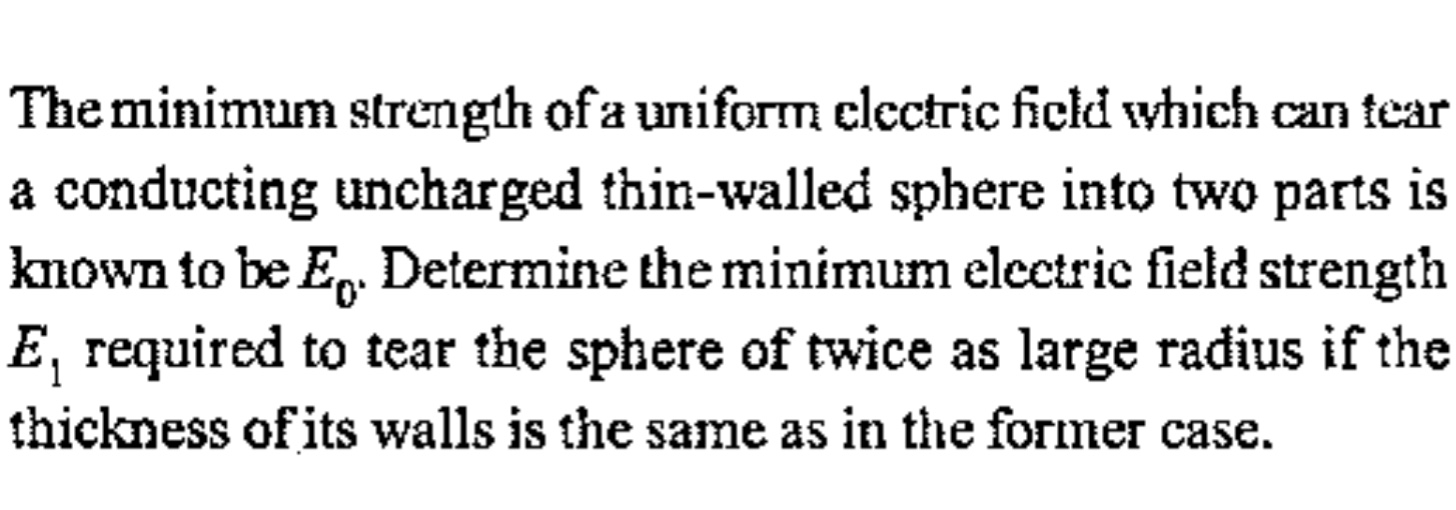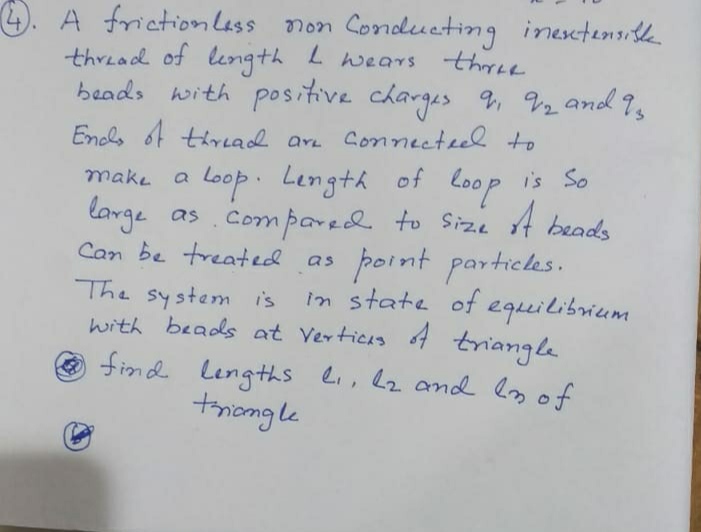89 - Electricity Questions Answers

By superposition principle, it is solved in minimum time and effort, other method is very complex. So use superposition principle.
Divide current in point 1 and 2, considering symmetry throughout, we get the equivalent resistance of the whole network except resistor R between 1 and 2 is 2R
Now 2R and R in parallel between 1 and 2
Now solve
a small ball of mass 1kg and a charge 2/3 uC is placed at the center of a uniformly charged sphere of radius 1m and charge 1/3 mC. a narrow smooth horizontal groove is made in the sphere from centre to surface as shown in figure. the sphere is made to rotate about its vertical diameter at a constant rate of 1/2pi revolutions per second. find the spedd w.r.t ground with which the ball slide out from the groove. neglect any magnetic force acting on ball?
Initially the spheres a and b are at potential be a and b respectively now sphere b is earthd by closing the switch the poential of a will become
No meaning can be incurred by this language. Rectify it for getting answer
A particle a having a charge of 5.0×10
is fixed in. a vertical wall. A second particle B of mass 100 g and. having equal charge is supended by a silk thread. of length 30 cm form the wall. The point of suspension is. 30 cm above the particle A. Find the angle of the thread. with the vertical when it stays in equilibrium.
if an area of isoscale right angle triangle(made of uniform wire of unit resistivity) is 8 unit. a battery of emf 10 unit is connected with across the longest branch then the current drawn from battery is approx ans is 3A
area = l2/2 = 8 so l = 4
ρ = 1
so resistance of the 3 legs of the triangle = 4/A, 4/A, 4√2/A
battery is connected across the longest branch so eq. resistance = 4/A+4/A+4√2/A = 13.6/A
i think area of cross section will be given then calculate current

use kirchhoff laws
4-10i+1-30x = 0
1-30x+20(i-x) = 0
solve it for i and x
potential across A and B = 4-10i+1 = 30x

since the circuit is symmetrical with respect to the line given so V, the potentials at the given points will be same
now calculate the eq. for the half circuit and double it for getting the eq. of the whole circuit

since the circuit is symmetrical with respect to the line given so V, the potentials at the given points will be same
now calculate the eq. for the half circuit and double it for getting the eq. of the whole circuit
for one side eq. of 2 and 4 = 4/3
and then 4 in series of it so 4/3 + 4 = 16/3
finally 16/3||4/3
eq = 16/15
final answer = 16/15 * 2 = 32/15





